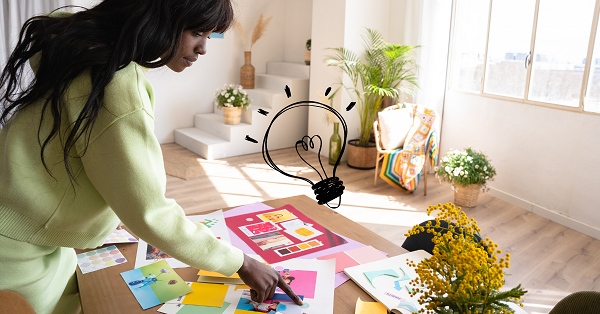Workplace Innovation through the Psychology of Creativity
Introduction
First of all, promoting innovation is now a necessity rather than a luxury in the dynamic modern workplace. The complex network of human creativity is at the core of innovative concepts and progressive solutions. We explore the depths of the human mind in this investigation of “The Psychology of Creativity: Nurturing Innovation in the Workplace” to learn about the complexities of creativity, how to harness it, and why it is essential for success in the workplace.
Knowing the Psychology of Creativity
Being creative is a cognitive process that is profoundly ingrained in the human mind, rather than a magical talent bestowed upon a chosen few. The cognitive processes, contextual elements, and personal characteristics that support the development of original concepts and solutions are revealed as we continue to explore the psychology of creativity. Divergent thinking, or the capacity to produce a wide range of concepts, viewpoints, and solutions, is fundamental to creativity.
In contrast to convergent thinking, which looks for the one right answer, divergent thinking promotes flexibility, investigation, and the creation of several options. Fostering divergent thinking at work creates an environment that is conducive to creative problem-solving and the development of new, original ideas.
The Effects of the Creative Setting
The surroundings, both psychologically and physically, have a big impact on creative thought. A creative work environment embraces adaptability, promotes candid communication, and offers areas for group brainstorming. Research demonstrates that attractive, well-planned workspaces can enhance motivation, mood, and cognitive functions, all of which have a favorable effect on creative production.
Passion and Intrinsic Motivation
People who are enthusiastic and intrinsically motivated in their profession are more creative. Genuine interest in the task at hand, or intrinsic motivation, provides a sense of mastery, autonomy, and purpose that stimulates creativity. By matching employees’ interests with the objectives of the company, leaders may capitalize on this and foster a creative environment that encourages innovation.
Accepting Failure and Embracing Risk
Being creative means taking chances, venturing into uncharted territory, and trying out novel concepts. Employees are encouraged to push boundaries and venture into uncharted territory in a work environment that values risk-taking and accepts failure as a necessary step on the path to success. The ability to learn from mistakes serves as a spark for ongoing innovation and growth.
Developing Creativity in the Workplace
Understanding the psychology of creativity can help businesses better understand how to foster an innovative culture. A closer look at implementable tactics is provided below:
Promote interdisciplinary collaboration
Dismantle departmental silos inside the company by encouraging cooperation among people with different backgrounds and viewpoints. By combining a variety of specialties, cross-disciplinary teams create a creative melting pot where concepts can be examined from several perspectives.
Allow Time for Mind-Wandering
Silent periods of reflection are generally when creativity happens. Give staff members time for “mind-wandering” activities in which they are free to let their thoughts roam, encouraging associative thinking and the creation of original ideas.
Lead Creative Workshops and Training
Provide staff members with the skills and resources they need to develop their creative thinking. Methods like mind mapping, design thinking, and brainstorming can be introduced during creative workshops and training sessions, establishing a common vocabulary and perspective on innovation.
Acknowledge and Honor Creative Contributions:
Honor and celebrate creative thinking within the company. Create employee appreciation initiatives that draw attention to and honor their creative contributions, thereby reiterating the importance of original thought.
Give Employees Access to Tools and Resources
Make sure that staff members have the tools and resources they need to realize their innovative ideas. This entails making technological investments, setting up areas for collaboration, and offering chances for skill improvement.
Analyzing the Impact
It becomes increasingly important to examine the effects on workplace innovation as companies embrace and put into practice creative thinking practices. Research suggests that a creative work environment is positively correlated with higher levels of production, employee satisfaction, and overall success for the firm. Companies that cultivate a culture that celebrates and promotes creativity put themselves in a leading position for innovation and are better equipped to adjust to the constantly changing needs of the business landscape.
Conclusion
The psychology of creativity appears as a crucial thread that weaves innovation and success into the larger picture of workplace dynamics. Through an awareness of the mental processes and contextual elements that stimulate innovative thought, companies may foster an environment that supports, encourages, and honors the creative genius present in every worker. The workplace becomes a blank canvas for innovation when we embrace the infinite potential of human invention, and the possibilities are endless. Also, not that creativity improves mental health.
